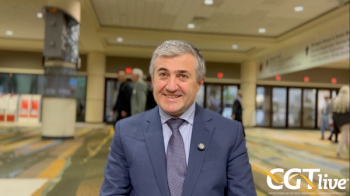
New Study Recommends Shorter, Flexible Monitoring After CAR T-Cell Therapy
There were no new cases of CRS past 2 weeks after infusion and non-relapse mortality was driven by infection in follow-up.
A new study published in Blood Advances has found that a shorter, flexible monitoring period after
The new research, conducted by first author Nausheen Ahmed, MD, Associate Professor, Hematologic Malignancies and Cellular Therapeutics, and Assistant Director, Cellular Therapeutics, and Medical Director, BMT Survivorship Program, University of Kansas Medical Center, and colleagues found that instances of new-onset cytokine release syndrome (CRS) and immune effector cell-associated neurotoxicity syndrome (ICANS) are rare after 14 days.
“As a clinician that administers CAR-T, I’ve had many patients who have not been able to receive it because of barriers to access,” Ahmed said in a statement.2 “I have patients who are traveling for 6 or even 8 hours to get treatment."
Currently, patients must remain close to the treatment center for 4 weeks as part of an FDA-mandated Risk Evaluation and Mitigation Strategy (REMS) to monitor and manage these toxicities, posing a large burden to potential patients.The guidelines also advise against driving for 8 weeks after infusion. REMS was implemented in response to high rates of CRS and ICANS seen in pivotal trials of the approved CAR T-cell therapies, but management and prevention of these toxicities has greatly improved in the years since.
READ MORE:
The retrospective study evaluated data from 475 patients across 9 centers that received infusion of axicabtagene ciloleucel (45%; n = 216), tisagenlecleucel (33%; n = 158), or lisocabtagene maraleucel(21%; n = 101) from 2018 to 2023 to treat B-cell non-Hodgkin lymphoma, collected from the Cell Therapy Consortium registry. Most participants (69.8%) received CAR T as third or later line (axi-cel 70%, tisa-cel 80% and liso-cel 53%, P <.001) and the majority (80%) received fludarabine/cyclophosphomide lymphodepleting chemotherapy (20% received bendamustine).1
CRS occurred in 60% of patients, mostly within the first 7 days after infusion (57.5%). There were no cases (0%) of new-onset CRS beyond 14 days after infusion. ICANS occurred in 32.4% of patients, mostly within the first 7 days after infusion (25.3%). There was 1 case (0.7%) of grade 2 ICANS beyond 14 days which lasted until day 34 post infusion.1
The investigators found that non-relapse mortality(NRM) in these patients up to 90 days after infusion was driven by ICANS in the early follow-up period (1.1% until day 28), then by infection through 3 months post-infusion (1.2%).1
“We are learning that infection may be driving a lot of the NRMand toxicity within the first few months after CAR-T infusion, so we have to shift our focus to preventing and managing infections after those 2 weeks,” Ahmed added.2 “Instead of the [authorized treatment center] trying to keep the patient locally for a long time, we could collaborate with and train community hematologists/oncologists and referring physicians to identify, initiate treatment for, and collaborate with the [center] to manage infections and other less common side effects.”
The study authors recommended reducing the monitoring period to 2 weeks with the flexibility to extend to 4 weeks depending on patient stability, physician comfort, and local community oncology support.To support this new monitoring strategy, community oncologists should be engaged and educated.
REFERENCES
1. Ahmed N, Wesson W, Lutfi F, et al. Optimizing the Post-CAR T Monitoring Period for Axicabtagene Ciloleucel, Tisagenlecleucel, and Lisocabtagene Maraleucel. Blood Adv. Published online July 23, 2024. Doi: 10.1182/bloodadvances.2023012549
2. Shortening FDA-Mandated CAR T-Cell Therapy Monitoring Periods Could Improve Access to Treatment in Patients With DLBCL. News release. ASCO Post. July 24, 2024. https://ascopost.com/news/july-2024/shortening-fda-mandated-car-t-cell-therapy-monitoring-periods-could-improve-access-to-treatment-in-patients-with-dlbcl/
Newsletter
Stay at the forefront of cutting-edge science with CGT—your direct line to expert insights, breakthrough data, and real-time coverage of the latest advancements in cell and gene therapy.

















































